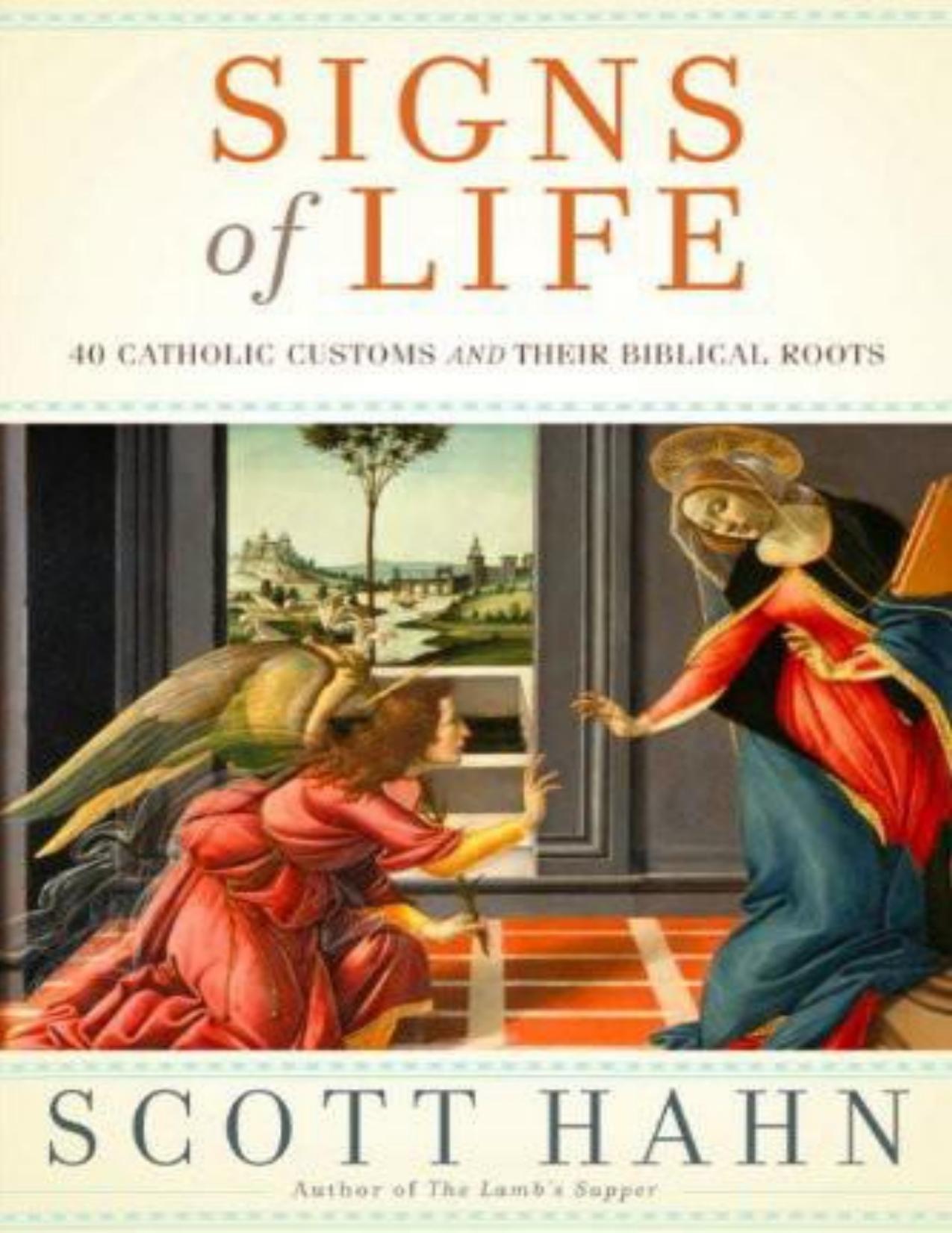Signs of Life: 40 Catholic Customs and Their Biblical Roots by Scott Hahn

Author:Scott Hahn
Language: eng
Format: mobi, epub, pdf
Tags: Religion, Catholicism, Christianity
ISBN: 9780307589507
Publisher: Image
Published: 2009-11-03T00:00:00+00:00
Marriage has God for its Author, and was from the very beginning a kind of foreshadowing of the incarnation of his Son; and therefore there abides in it a something holy and religious; not extraneous, but innate; not derived from men, but implanted by nature.
—Pope Leo XIII, nineteenth century
21.
PRIESTHOOD
Before I was Catholic, I was anti-Catholic. As a high-school student I was active in para-church organizations that trained members to point out biblical “objections” to the Catholic faith. I often confronted Catholics with the words of Jesus: “call no man your father on earth” (Mt 23:9). Why then, I would ask, do Catholics address their priests as “Father”? I cringe now, not so much at my misunderstanding of Catholicism as my misunderstanding of the Bible.
After years of researching and praying, it became clear to me that the Scriptures indeed present God’s priests as fathers. In biblical religion, a priest is a father—and even more a father than the man you or I might already call by that name “on earth,” our natural or adoptive dads.
Let’s begin at the beginning. In studying the Old Testament, we can divide the history of the priesthood into two periods: the patriarchal and the Levitical. The patriarchal period corresponds to the book of Genesis, while the Levitical period begins in Exodus and lasts until the coming of Jesus.
The religion of the patriarchal period was significantly different from the religion practiced by Israel after Moses received the Law on Mount Sinai. Patriarchal religion was firmly based on the natural family order, most especially the authority handed down from father to son—ideally the firstborn—often in the form of the “blessing” (see Gen 27).
In the book of Genesis, we find no separate priestly institution or caste. There is no temple set aside as the exclusive site of sacrifice. The patriarchs themselves build altars and present offerings at places and times of their own choosing (see Gen 4:3–4, 8:20–21, and 12:7–8). Fathers are empowered as priests by nature.
There are vestments associated with the office. When Rebekah took the garments of Esau, her firstborn, and gave them to Jacob (Gen 27:15), she was symbolically transferring the priestly office. We see the same priestly significance, a generation later, in the “long robe” that Jacob gave to his son Joseph (see Gen 37:3–4), and we understand why Joseph’s half brothers were filled with envy.
Fatherhood is the original basis of priesthood. The very meaning of priesthood goes back to the father in the family—his representative role, spiritual authority, and religious service. The firstborn is the father’s heir apparent, the one groomed to succeed one day to paternal authority and priesthood within the family. From the beginning, priesthood belonged to fathers and their “blessed” sons.
The pattern continued into the book of Exodus. There God declared to Moses, “Israel is my firstborn son” (Ex 4:22)—that is, among the many peoples of the earth, Israel was God’s heir and his priest. At the Passover, the nation’s firstborn sons were redeemed by the blood of the Paschal Lamb,
Download
Signs of Life: 40 Catholic Customs and Their Biblical Roots by Scott Hahn.epub
Signs of Life: 40 Catholic Customs and Their Biblical Roots by Scott Hahn.pdf
This site does not store any files on its server. We only index and link to content provided by other sites. Please contact the content providers to delete copyright contents if any and email us, we'll remove relevant links or contents immediately.
Resisting Happiness by Matthew Kelly(2887)
The Social Psychology of Inequality by Unknown(2311)
Designing Your Life by Bill Burnett(2265)
Day by Elie Wiesel(2243)
The Giving Tree by Shel Silverstein(1837)
Angels of God: The Bible, the Church and the Heavenly Hosts by Mike Aquilina(1628)
Human Design by Chetan Parkyn(1574)
Augustine: Conversions to Confessions by Robin Lane Fox(1473)
The Supreme Gift by Paulo Coelho(1446)
Hostage to the Devil by Malachi Martin(1396)
7 Secrets of Divine Mercy by Vinny Flynn(1392)
Jesus of Nazareth by Joseph Ratzinger(1378)
Dark Mysteries of the Vatican by H. Paul Jeffers(1341)
The Vatican Pimpernel by Brian Fleming(1340)
Saints & Angels by Doreen Virtue(1311)
St. Thomas Aquinas by G. K. Chesterton(1306)
My Daily Catholic Bible, NABRE by Thigpen Edited by Dr. Paul(1208)
Called to Life by Jacques Philippe(1202)
The Ratline by Philippe Sands(1165)
